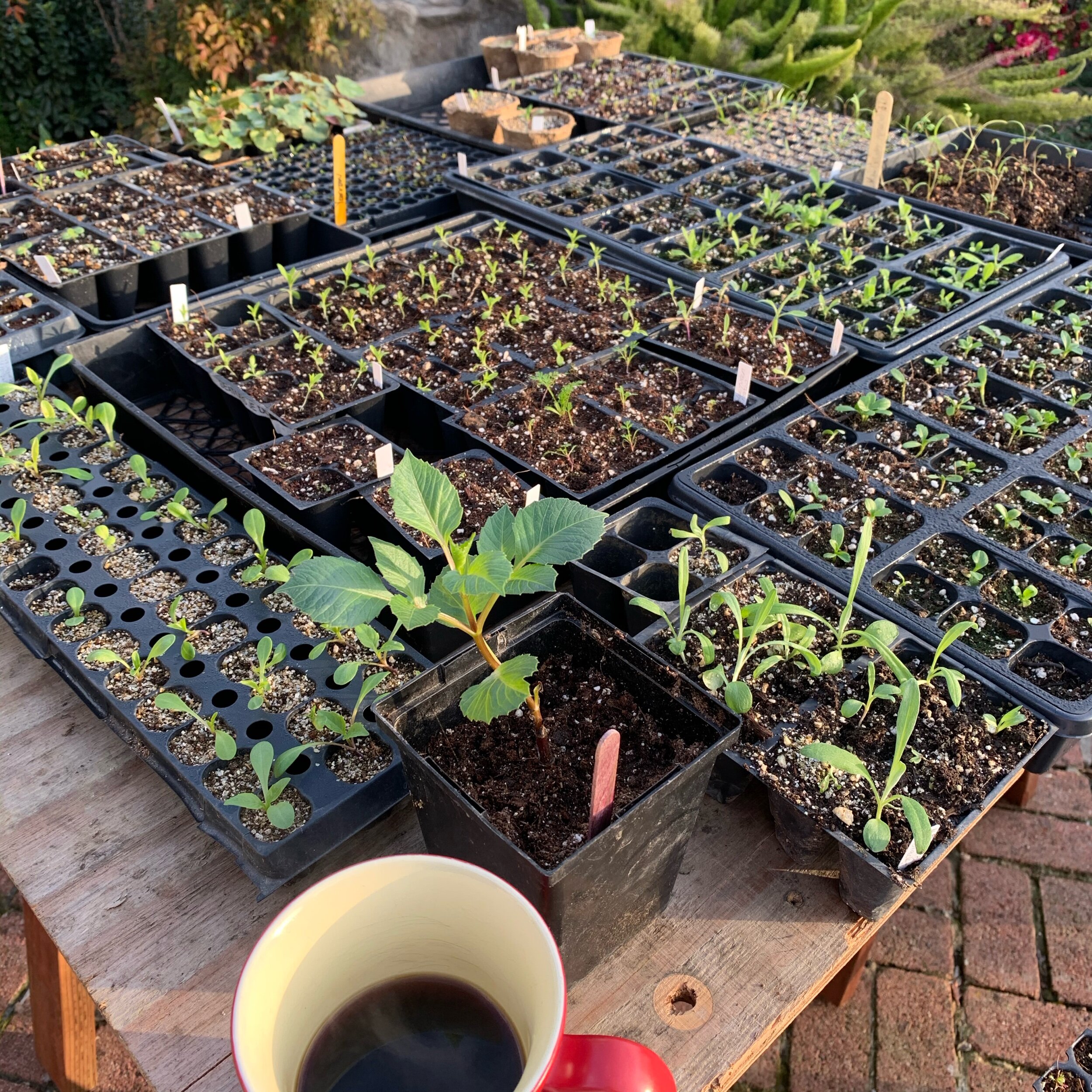Put down the seed packets!!!
It’s unusually warm here in the Sacramento Valley for this time of year and it’s making everyone’s hands itch to get into the dirt. Gardeners beware though! This is one of many false springs and starting seeds right now could lead to a spring disaster if you aren’t paying attention to the back of your seed packets. Although it might be tempting to rip open those bean, cucumber, squash and zinnia packets please put the seeds down and slowly back away! Starting plants that aren’t cold or “frost hardy” right now runs the risk of your plants becoming too “leggy”, root bound or sickly. Plants want to have nice open dirt to spread their roots out in and the longer they spend smashed up in seedling trays plants become unhappy, depleted of nutrients and increasingly susceptible to disease and pest pressure.
Where to start?
So how do you tell if you can start something now or if you need to glare anxiously at the packet for a few more weeks? First off, look to see the plant hardiness. Does the packet say annual, hardy annual, tender perennial, or perennial? This will let you know how much cold a plant can tolerate. Annual means the plant has a one season life cycle. It will sprout, grow, bloom, go to seed and die at the first frost never to return again. Hardy annuals have much the same life cycle as annuals but they can take a light frost and maybe even a freeze depending on the plant. Our farm is in the USDA Growing Zone 9b which means hardy annuals often do very well if planted out in the fall. We keep an eye out if the temps are going to drop below 32 for an actual “freeze” and cover the rows with a light weight frost fabric. You can find frost cloth at all the major garden centers. Tender Perennials are plants that come back year after year but don’t like too much cold. If we have a deep freeze they would benefit from being covered but most likely will bounce back with no issues in spring when temperatures start to rise. Perennials are my jam and what we are currently focusing on growing more of this year. They grow back year after year as long as they get enough water, light and nutrients.
Germination Requirements
The next most important thing is to consider the germination requirements. Some flowers only germinate if they are completely blocked from light (pansies) others you shouldn’t cover at all because they need bright light to germinate (poppies). The germination temperature is also a big factor. Seeds have a temperature range they need to be in and it’s not always 70-80 degrees. Nigella and Orlaya prefer being cold to germinate 55-60 degrees. You should always note the date you sow your seeds. If my time as a gardener taught me anything it was to make sure to check the days to germinate. So many times I’ve sown faster sprouting seeds along with slow pokes and been frustrated that half my seeds “didn’t work.” All along it was that I hadn’t given the slow poke flowers enough time and I ended up tossing perfectly good seeds in the compost pile that just needed a little more time to push out of their shell. Germination days can be as short as 2-3 days and as long as 14-20 days. So be patient!
Do your packets lack information?
What if the seed packet has none of that information on it? This has definitely happened to me before and I now have a few internet resources in my back pocket to search for the information. Johnny’s seeds is one of my go to sites for buying and learning about seed requirements. Their packet information is as detailed as it gets. Floret Flowers also has a great amount of information available on her shop page and blog. I could go down a rabbit hole and waste days learning from her blog posts.
So what can I start? I really want to get in the dirt!
I can’t really help you much with veggies because we are totally #teamflower over here. But the flowers I’m starting right now can start now are Craspedia, Calendula, Bachelor buttons (corn flower), Poppies, Snapdragons, Scabiosa (pincushion), Foxglove, Larkspur, Sweet peas, Black-Eye Susan, Dill and Yarrow. In a few weeks (mid-February) we’ll really get going with most everything else. Zinnias, sunflowers and cosmos will hold off even longer because they only need 3-4 weeks before being transplanted and they also grow beautifully when directly seeded into the ground, saving us a step of starting them indoors.
What if I kill everything and am a horrible plant parent?
Don’t worry, I got you! We will have more flowers than we can plant in the ground for sure (and maybe even a few veggies complements of the local Rio Linda Grange). We will be doing a plant sale the end of March to try and find happy homes for all our wayward flower babes. Keep an eye on your email for that announcement in mid March. And there is always the option to just let the farmers do the work for you and sit back and enjoy a beautiful bouquet delivered to your door without the hassle of dragging bags of dirt home from the hardware store.
Newly sprouted snapdragon seeds in soil blocks


